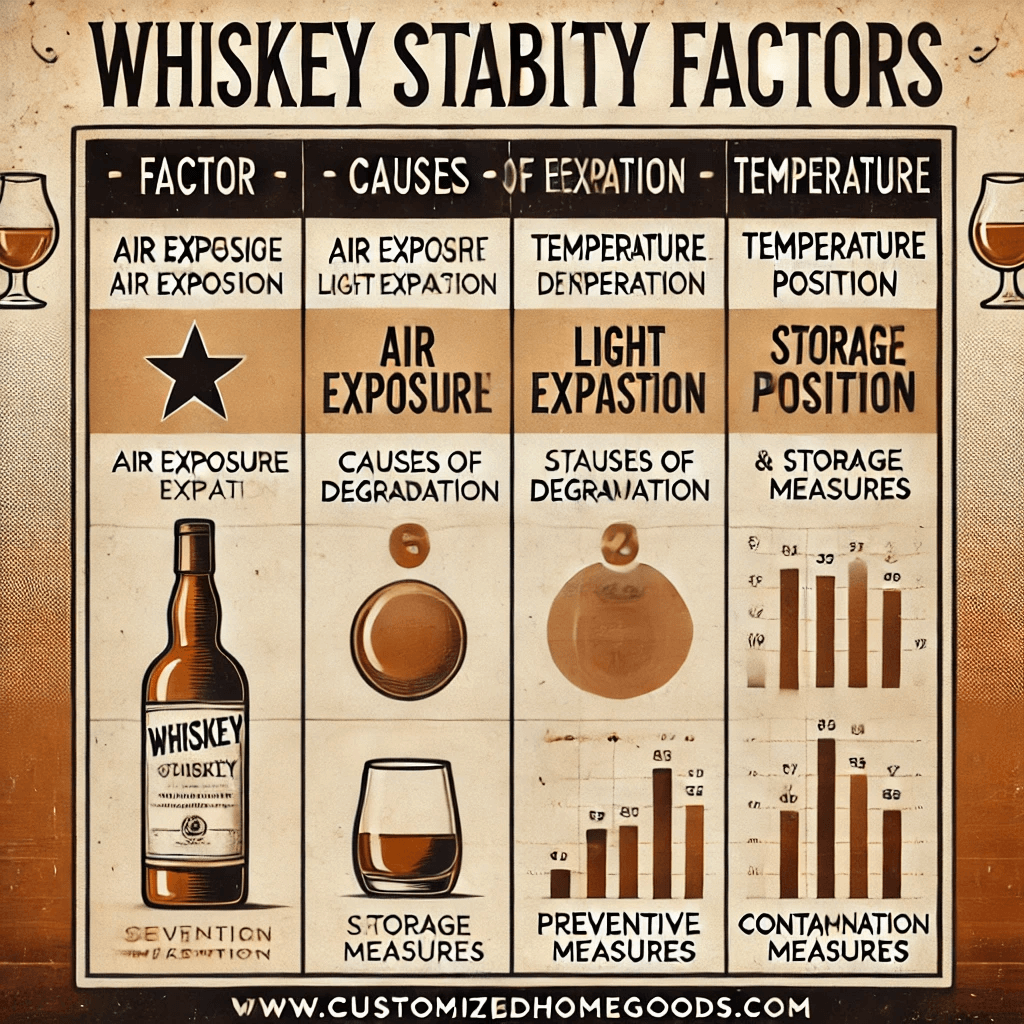Can Whiskey Go Bad?
How To Detect Bad Whiskey
Whiskey, our timeless spirit, is celebrated for its rich flavors and enduring shelf life. But can whiskey “really” go bad? While whiskey is remarkably stable, it’s possible to degrade under certain conditions. Our guide explores the reasons, causes, methods of detection, results, and preventative methods for whiskey spoilage, helping you keep your bottle in peak condition.
Why Whiskey Can Degrade
Whiskey's high alcohol content and sealed bottling typically make it resistant to spoilage. However, changes in flavor, aroma, and appearance can occur over time due to environmental and handling factors. These changes are caused by the following:
Key Causes:
Oxidation:
Once a bottle is opened, exposure to air begins to oxidize the whiskey.
Results in a loss of complexity and muted flavors.
Light Exposure:
UV light degrades compounds in whiskey, leading to faded color and altered taste.
Temperature Fluctuations:
Repeated changes in temperature expand and contract the liquid, impacting quality.
Improper Sealing:
Poorly closed bottles allow air and contaminants to enter, accelerating spoilage.
Contamination:
Dust or particles can enter an unsealed bottle, affecting its purity and flavor.
Methods to Detect Spoilage
Spotting spoiled whiskey involves paying close attention to sensory cues. Here are some key methods to identify it:
1. Appearance
Look for cloudiness, sediment, or discoloration, which may indicate contamination or degradation.
2. Aroma
Spoiled whiskey may have off-putting, sour, or musty odors instead of its usual rich notes.
3. Taste
Degraded whiskey may taste flat, metallic, or unpleasantly harsh.
4. Seal Integrity
Check for loose caps or cork damage, which may indicate prolonged air exposure.
Results of Spoiled Whiskey
While whiskey doesn’t "go bad" in the way milk or food does, degradation affects its quality and enjoyment:
Flavor Loss:
Oxidation dulls the taste, leaving behind a less complex, lifeless profile.
Aroma Deterioration:
Aromatic compounds break down, losing the signature bouquet.
Visual Changes:
Cloudiness or sediment can signal that your whiskey has been compromised.
Preventative Methods
To preserve whiskey’s integrity, proper storage and handling are essential. Follow these best practices:
1. Store Upright:
Keep whiskey bottles upright to prevent cork interaction with the liquid, which can degrade the seal.
2. Control Temperature:
Store whiskey in a cool, consistent environment (50–60°F) away from extreme fluctuations.
3. Minimize Light Exposure:
Keep bottles away from direct sunlight or UV light to protect the whiskey’s compounds.
4. Seal Properly:
Always close bottles tightly to limit air contact.
5. Consider Decanting:
Transfer to smaller bottles as the liquid decreases to reduce air exposure in partially filled bottles.
Helpful Chart: Whiskey Stability Factors
Final Thoughts
While whiskey is one of the most durable spirits, it’s not invincible. Knowing how to detect spoilage and taking preventative steps can ensure your bottle remains as enjoyable as the day it was opened. Proper storage and mindful handling are kessential to preserving the flavors and aromas that make whiskey a cherished drink. Cheers to your next perfect pour!


